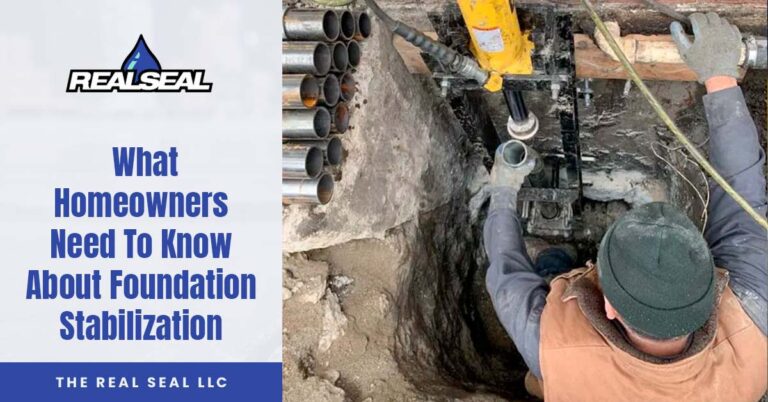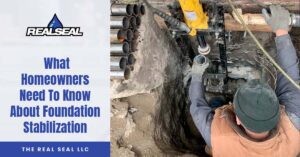Are you looking for information about foundation stabilization? If so, don’t hit that back button because you’ve landed on the right page. In this article, we’ll go over foundation stabilization, why it’s sometimes necessary, types of foundation stabilization, and more.
What Is Foundation Stabilization?
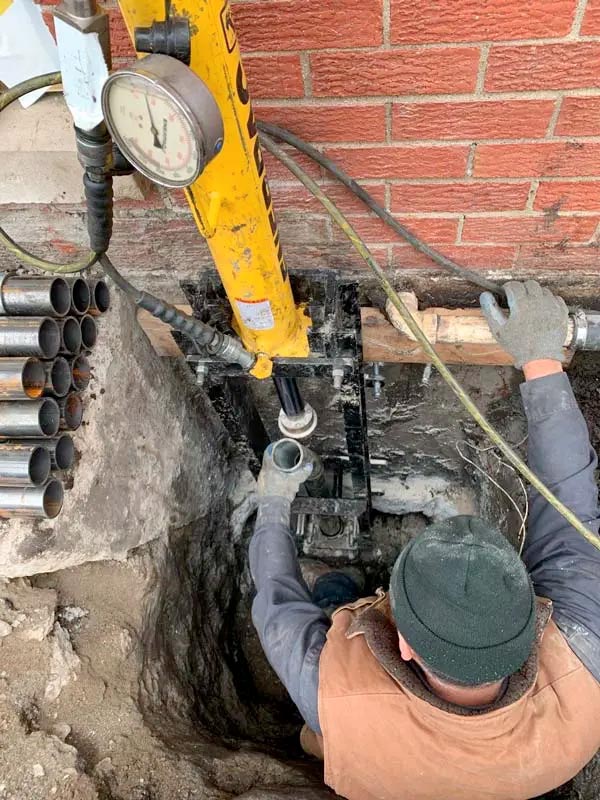
Foundation stabilization is a crucial aspect of repairing and strengthening a damaged foundation. This process, also known as underpinning, involves providing additional support to a house’s foundation to prevent further damage. The underpinning process involves excavating around the house and adding piers to extend the foundation to load-bearing soil.
Foundation stabilization via underpinning is a complex process that requires specialized equipment and expertise. A qualified foundation repair contractor must carefully assess the foundation and determine the best course of action for repairing and strengthening it.
In addition to repairing and strengthening damaged foundations, underpinning can also be used to provide additional support to new construction projects. For example, a new building on unstable soil may require underpinning to prevent foundation settlement.
Why Is Foundation Stabilization Sometimes Necessary?
Foundation stabilization is often necessary when a house’s existing foundation suffers from a phenomenon called “differential settlement” or when a foundation is settling into the ground unevenly. A small amount of uniform settlement is pretty common after a house is built, and usually, nothing to lose sleep over. Differential settlement is another matter. Differential settlement can cause severe structural damage if not corrected via foundation stabilization.
So, what causes differential settlement?
Various things cause differential settlement, including expansive soil, erosion-prone soil, earthquakes, excavation next to the foundation, and soil incorrectly prepared before construction started.
If not corrected, differential settlement can compromise the house’s structural integrity, leading to safety hazards, diminished property value, and structural failure.
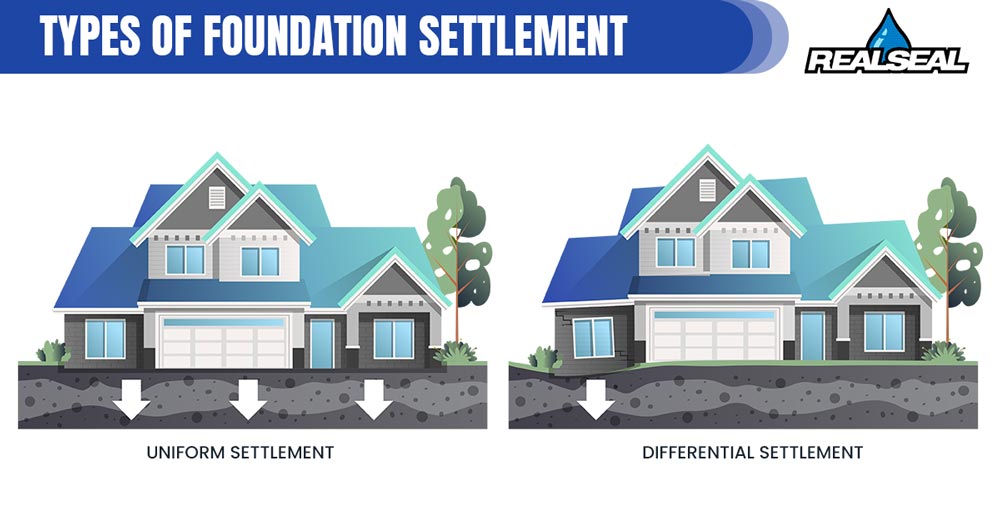
Common signs of differential settlement
The most common signs of differential settlement include the following:
- Cracks in the walls, floors, and ceiling
- Bowed and/or cracked basement wall
- Cracks from the corners of doors and windows
- Uneven floors
- Doors and windows that no longer open or close properly
- Gaps between the walls and the ceiling or floor
- Stair step cracks in brick or masonry
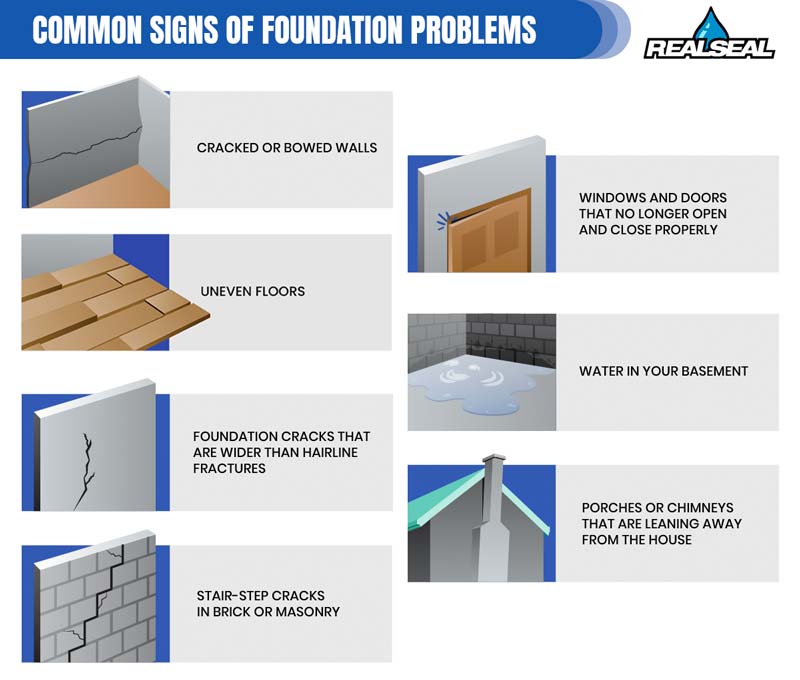
If you see any of the above – or anything else that strikes you as suspicious – consult a foundation repair contractor to accurately assess the situation and determine the appropriate course of action. If left untreated, differential settlement can cause significant damage.
Types Of Foundation Stabilization To Correct Differential Settlement
There are various types of foundation stabilization methods, each designed to address different foundation problems. The most common methods include push piers, helical piers, drilled concrete piers, and slab piers.
Push Piers
Underpinning using push piers involves driving the piers deep into the soil until they reach stable ground. Once installed, they transfer the structure’s weight to the more stable soil, providing lasting support.
- The first step when installing push piers for foundation stabilization is to excavate around the foundation to expose the footing.
- Next, steel brackets are attached to the foundation.
- The steel push piers are driven through the brackets and into the ground until they reach load-bearing soil that can support the structure’s weight.
- The last step in installing resistance push piers is to backfill the excavated soil.
Helical Piers
Helical piers look something like giant corkscrews and are turned into the soil until they reach the required depth. Once the helical piers are installed, they are anchored to the foundation using brackets.
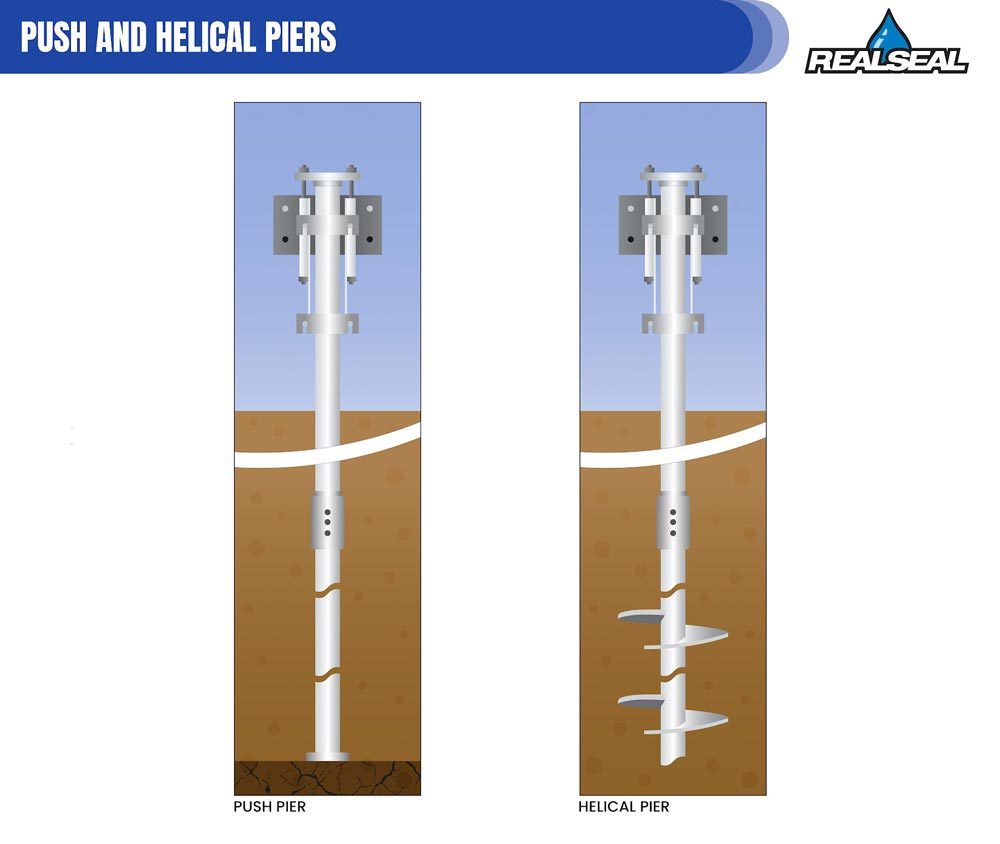
Drilled Concrete Piers
Drilled concrete piers, as the name suggests, require drilling holes into the ground beneath the foundation. After the holes have been drilled, rebar is inserted into the holes for reinforcement. This helps to strengthen the piers and prevent them from cracking or breaking over time.
Slab Piers
Finally, slab piers are used to stabilize concrete slab foundations. This technique involves installing push or helical piers through holes cut into the slab.
All these foundation stabilization methods get the job done. The chosen method depends on the problem, foundation location, etc.
Signs Your Home Might Have A Foundation Problem
Since the foundation supports the weight of the entire house, any issues with the foundation can lead to severe and costly problems if left unaddressed. Therefore, homeowners must know how to identify the common signs of foundation issues before they become big problems that will cost even more money to fix.
- One of the most apparent signs of a foundation issue is cracks in the home’s walls, floors, or ceilings. These cracks could range from tiny hairline fractures to larger, more noticeable gaps.
- Additionally, doors and windows may stick or refuse to close properly.
- Another sign of potential foundation issues is an uneven or sloping floor.
- A bowed and/or cracked basement wall is a sure sign of a foundation issue.
- Pest infestations, such as termites, may also signal foundation issues. Termites and other pests are often attracted to moisture and can enter homes through small cracks in the foundation.
- Gaps or separations between the walls and/or the floor and ceiling indicate a problem with the foundation.
- Stair step cracks in brick or masonry are a sure sign the foundation has moved.
- A chimney or porch pulling away from the house is another sign that the home’s foundation may have a problem.
As noted above, homeowners can save themselves a lot of money and stress by catching foundation problems early and addressing them right away before they worsen.
Common Causes Of Foundation Problems
Various things, including the following, cause foundation problems:
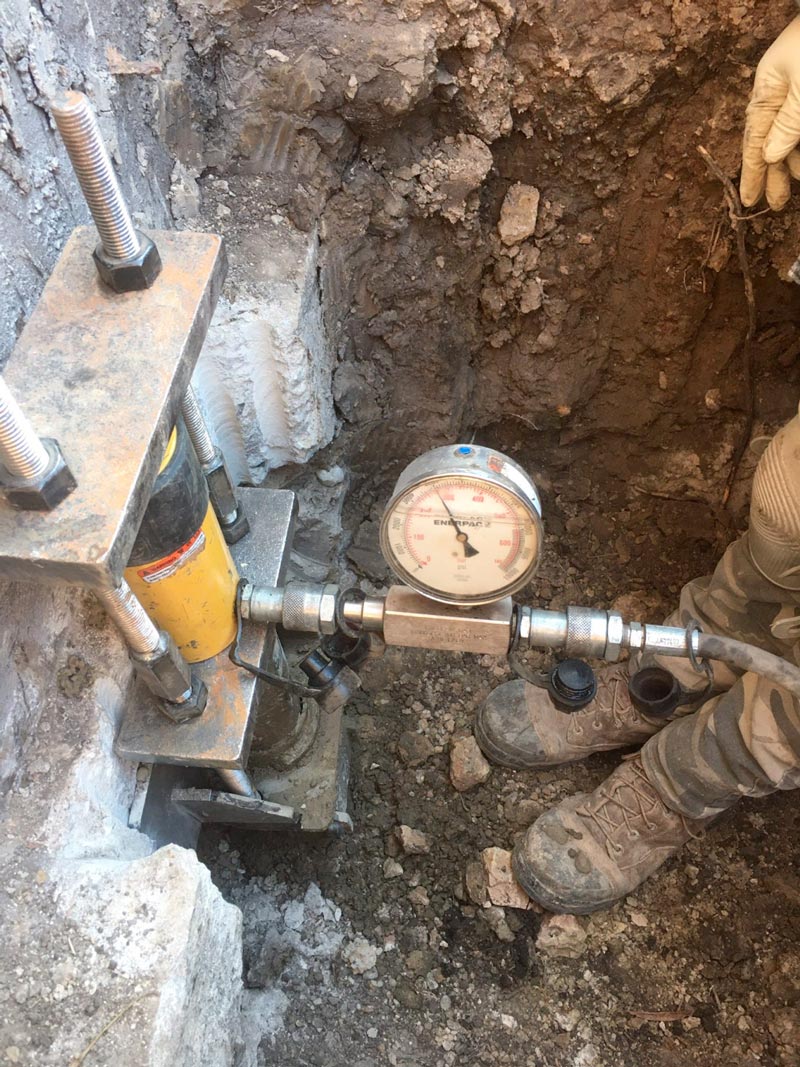
- Soil movement – This can be caused by several factors, including soil composition, moisture content, and temperature changes. If the soil underneath a home moves, it can lead to differential settlement and foundation damage. In areas with expansive soil (soil with a high clay content), foundation problems are especially common. Expansive soil swells and shrinks significantly with changes in moisture, causing movement under the foundation.
- Poor construction practices – It happens. It might include improper drainage and grading, inadequate reinforcement of the foundation, or the use of subpar building materials.
- Poor soil compaction – Soil must be adequately tamped down before construction starts. If this doesn’t happen, the foundation can settle unevenly into the ground after it’s built.
- Natural disasters – Earthquakes, floods, tornadoes, etc., can also cause foundation problems. These events can lead to soil movement and shifting and damage to the foundation itself.
How Much Does It Cost To Stabilize A Foundation?
The cost of stabilizing a foundation via underpinning depends on various factors, including the specific problem being addressed, the size and location of the foundation, and the chosen repair solution. Here in Chicagoland, as of July 2023, the cost to underpin a residential foundation experiencing differential settlement ranges from $15,000-35,000 on average. Depending on the specific project, it can be more or less. For more information, see How Much Does House Leveling Cost Using Underpinning?
If you think your Chicagoland home might need foundation stabilization, contact The Real Seal today to schedule a foundation evaluation and receive a repair estimate.
